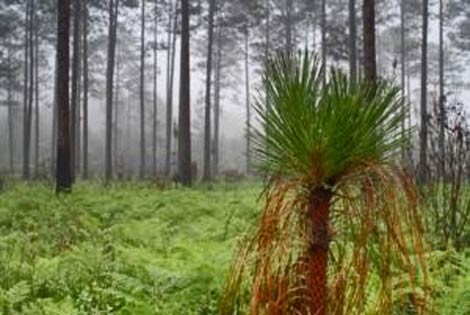
Image by Lowcountry Open Land TrustImage by 20080804brosnanforest.jpg Brosnan Forest is thick and massive. More photos are available online.
Much of Brosnan Forest is going into permanent protection after Norfolk Southern donated it to the Lowcountry Open Land Trust.
[gmap markers=blue::33.18123802491263,-80.49407958984375 |zoom=9 |center=33.13295131251587,-80.452880859375 |width=220px |height=250px |control=Small |type=Map]View a more detailed map.
The 12,488 acres donated are some 35 miles northwest of Charleston and represent the majority of the forest. Norfolk Southern is retaining about 1,900 acres for "corporate meetings, agricultural and recreational purposes, and wildlife management and research."
The land equates in size to some 15 Central Parks, and 100 times the size of the chunk of Morris Island that was recently preserved.
A press release talked about the relevance of the land donation:
The undeveloped land is the largest corporately held and privately protected property in South Carolina. Brosnan Forest is especially significant because it provides a protected habitat for 79 groups of the endangered Red-cockaded Woodpecker and serves as home to the largest known and most researched population under single ownership on private land. Norfolk Southern has participated in a Safe Harbor program through the South Carolina Department of Natural Resources to provide a protected nesting area for the woodpecker since 1999. Additionally, the property is designated an Important Bird Area by the American Bird Conservancy and National Audubon Society.
Brosnan Forest also includes more than 6,000 acres of longleaf pine trees. Longleaf pines can grow to 120 feet tall and live up to 500 years. The longleaf pine ecosystem, once one of the most extensive in North America, is now among the most threatened. It currently occupies about 2 percent of its original coverage. This ecosystem is valued not only for its aesthetic appeal, but also for its outstanding biodiversity. It has a natural resistance to fire and insects and supports more than 30 threatened or endangered plant and animal species.
The Land Trust has now secured the preservation of some 72,429 acres. You can view a mini-tour of the protected lands online.
Update August 10: The Post and Courier went out and visited the forest, they also have a video of their visit.


